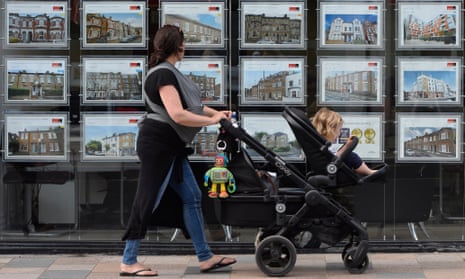As much of the nation focused with growing trepidation on “freedom day” last week, an eye-opening report on the unequal economics of Covid went slightly under the radar. Looking at a range of indicators, researchers from the Resolution Foundation thinktank did the maths on how 16 months of lockdown had affected households’ wealth. The stark conclusion was that the pandemic had “turbo-charged” the already yawning gap between the rich and the poor.
Unlike the aftermath of the 2008 crash, when asset prices joined a general economic nosedive, the pandemic produced the oddity of a boom in the middle of a recession. Property values, partly driven by government action to stimulate demand, are now significantly above pre-pandemic levels. Share prices have also been buoyant, although fears over the ongoing spread of the Delta variant led to a downturn this week. Savings amassed while working at home contributed to a £900bn increase in total household wealth. At the top end of the scale, the gap between the richest 10% of families and the median family grew to 55 times the typical household income. By contrast, at the bottom end, families lost income while on furlough, or worked fewer hours, ending up with greater debt than when the pandemic began.
In one sense this should come as no surprise. For decades, the unspoken rule of British politics has been that the asset-rich shall become richer. Adjusted for inflation, the value of household wealth has doubled since 1980, but revenue from taxes on wealth has remained more or less stagnant. The highly prosperous have received timorous, kid-glove treatment from successive governments. Reforms to capital gains tax were contemplated in the spring by the chancellor, Rishi Sunak, and then speedily returned to the back burner. Tax reliefs on savings and investments have gone untouched. Council tax rates have become an unjust and regressive absurdity. Anachronistically determined by reference to 1991 property values, the current bands persist only because no government dares to do anything about them.
Exacerbated by Covid, this inequitable state of affairs has surely become unsustainable. Releasing their State of the Nation 2021 report this week, the social mobility commission noted that, after two years in office, Boris Johnson’s government was “nowhere near” achieving its stated “levelling-up” aims. Yet when it comes to addressing the real terms decline in nurses’ pay, dealing with the huge crisis in educational attainment, or addressing growing child poverty, the government routinely points to budget constraints. Now-shelved proposals to fund a social care and health levy through raising national insurance would have made matters worse. It is a disgrace that the social care funding crisis has still not been addressed, but the answer is not a regressive raid on the incomes of the less well-off.
Polls have suggested robust public support for higher taxes on wealth. This is based on a justified sense that the gap between the rich and the poor has become too large and that the rich have become richer in recent years. There is also a broad consensus that the times demand a greater level of government spending for the common good. After 40 years of gains at the top, the case for reforming Britain’s wealth-related taxes was strong before the pandemic. Given the huge challenges that an even more unequal post-pandemic Britain will face, it is now surely unarguable.
